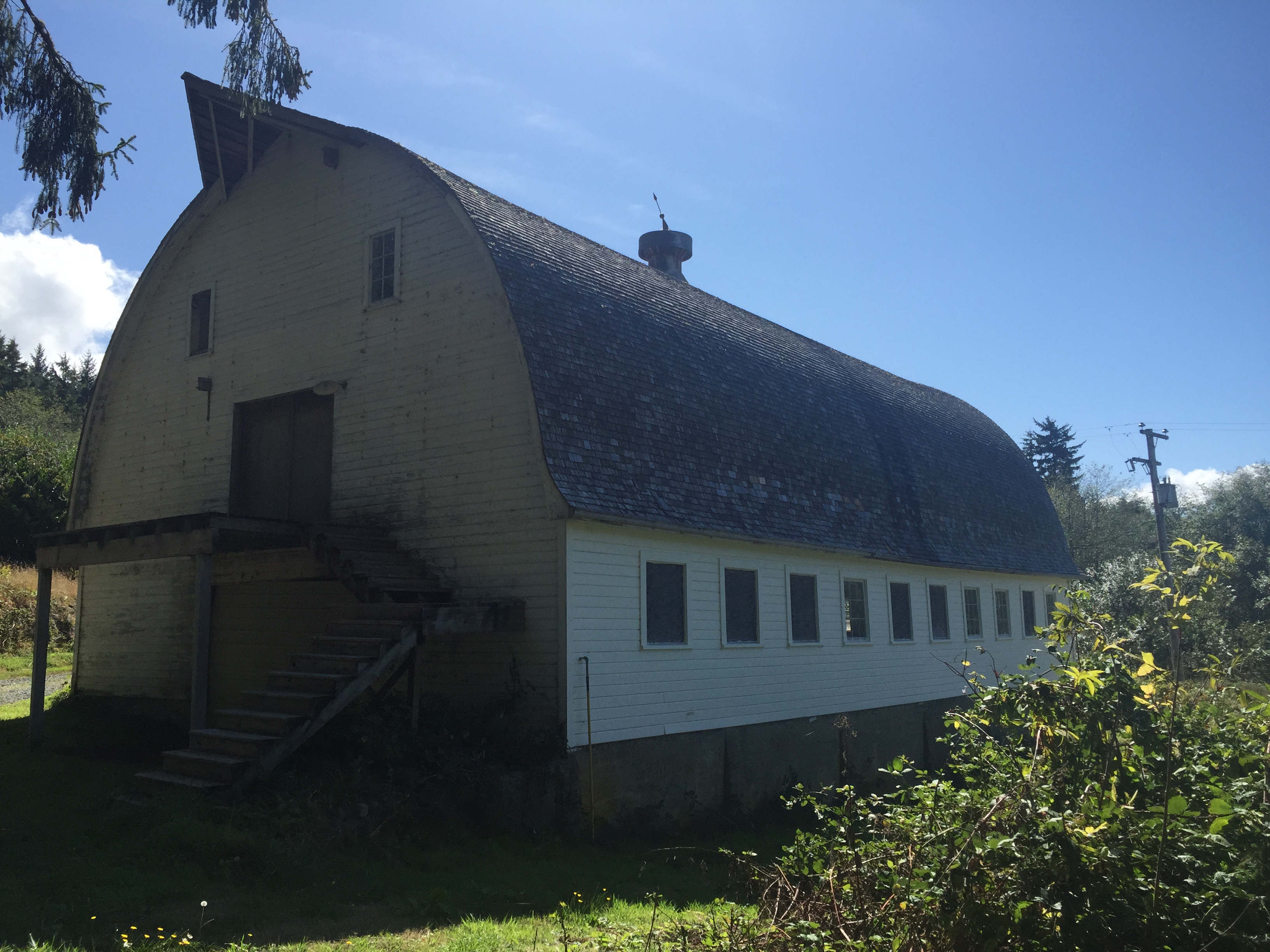
-
Barn Outside the UGB in the Seaside Area
Seaside was considering expanding its Urban Growth Boundary (UGB) by 200 acres — increasing the land that the town can use for future growth. In March 2016, the Planning Commission decided to wait until the new population forecast was available. The UGB expansion was put on hold until release of the north coast updated population forecast by Portland State University in Spring/Summer 2017. This turned out to be a wise decision, as the new forecast shows essentially no growth for Seaside. Thus, the city has no legal grounds to expand its Urban Growth Boundary, and the proposal is now dead.
The planning commission was principally focused on the Southeast Hills region. For the necessary detailed planning work, Seaside was using the well-known international planning firm Otak. Seaside, a small coastal town, would probably be unable to afford Otak, but Weyerhaeuser Company paid for Otak’s services. Why? Weyerhaeuser owns about 140 acres of the 200 acres of the proposed UGB expansion area in the Southeast Hills, and wanted to urbanize them.
Weyerhaeuser relies heavily on real estate sales; the company has an entire website dedicated to it. But in Oregon, Weyerhaeuser could not simply build houses on its forestland. It had go through the land use laws’ requirements. As a motivated landowner, self-interested in the UGB expansion which would allow them to urbanize low-lying lands, Weyerhaeuser was “helping” Seaside plan for this by donating Otak’s services. Now the land will remain as forestland in Clatsop County jurisdiction, since there will be no UGB expansion.
What about moving Seaside out of the tsunami zone? Most of the town hugs the shoreline. This UGB expansion would not have moved the town out of the low-lying region where it now lies; it would just create more urbanizable residential area that Seaside does not need up in the hills. What Seaside should do is designate a higher region in City limits or the existing UGB and move important emergency services to the safer location. Seaside schools are being moved to higher ground, now that voters in May 2017 passed a bond measure to do so.
ORCA continues to work with local residents on related problems, such as incentives and local planning for affordable housing, and using infill to meet housing needs. Seaside, like all coastal towns, has serious problems with insufficient affordable housing. But a UGB expansion providing high-end housing in the hills would not have added to Seaside’s affordable housing stock, rhetoric to the contrary.
